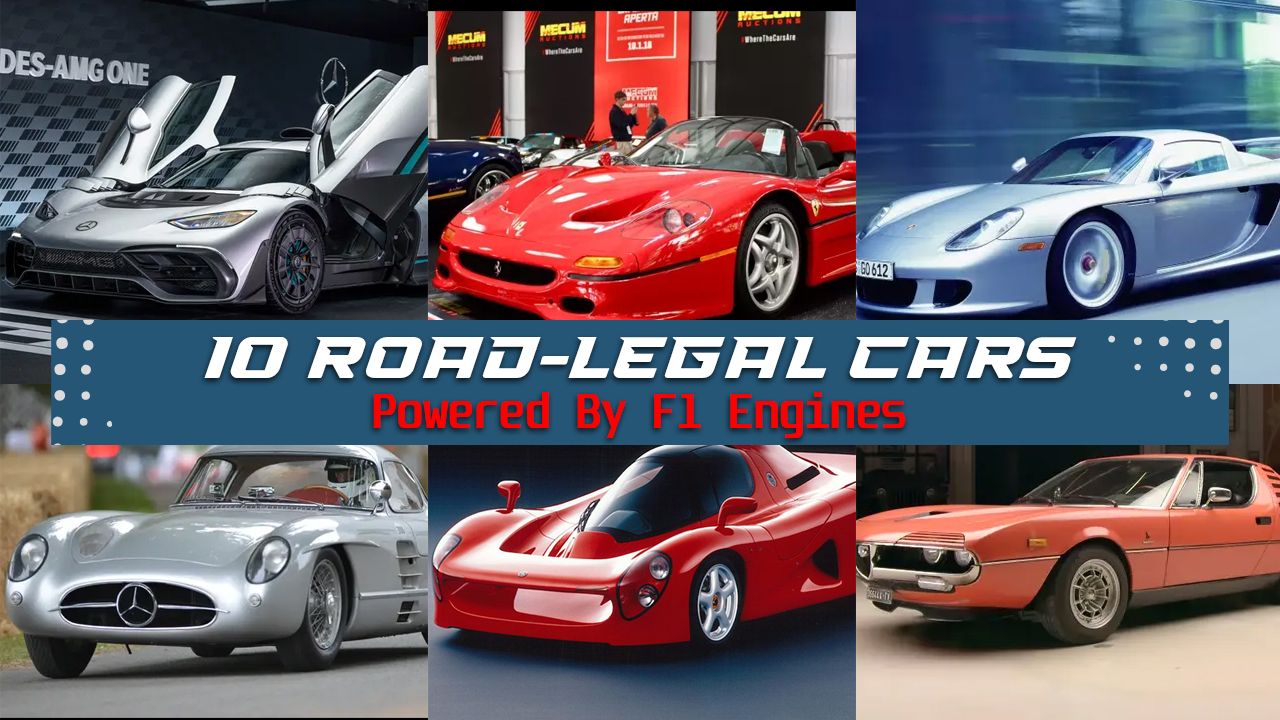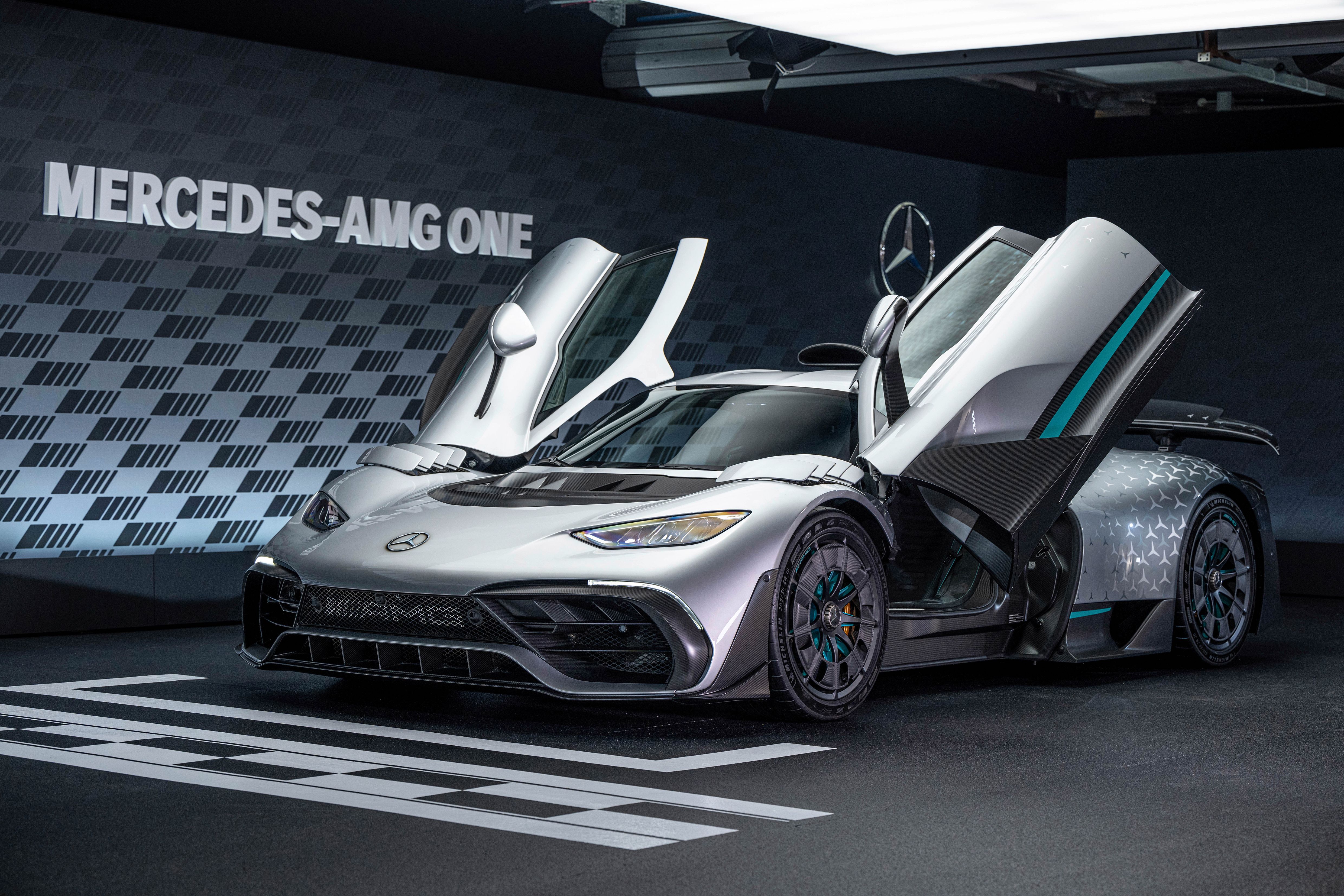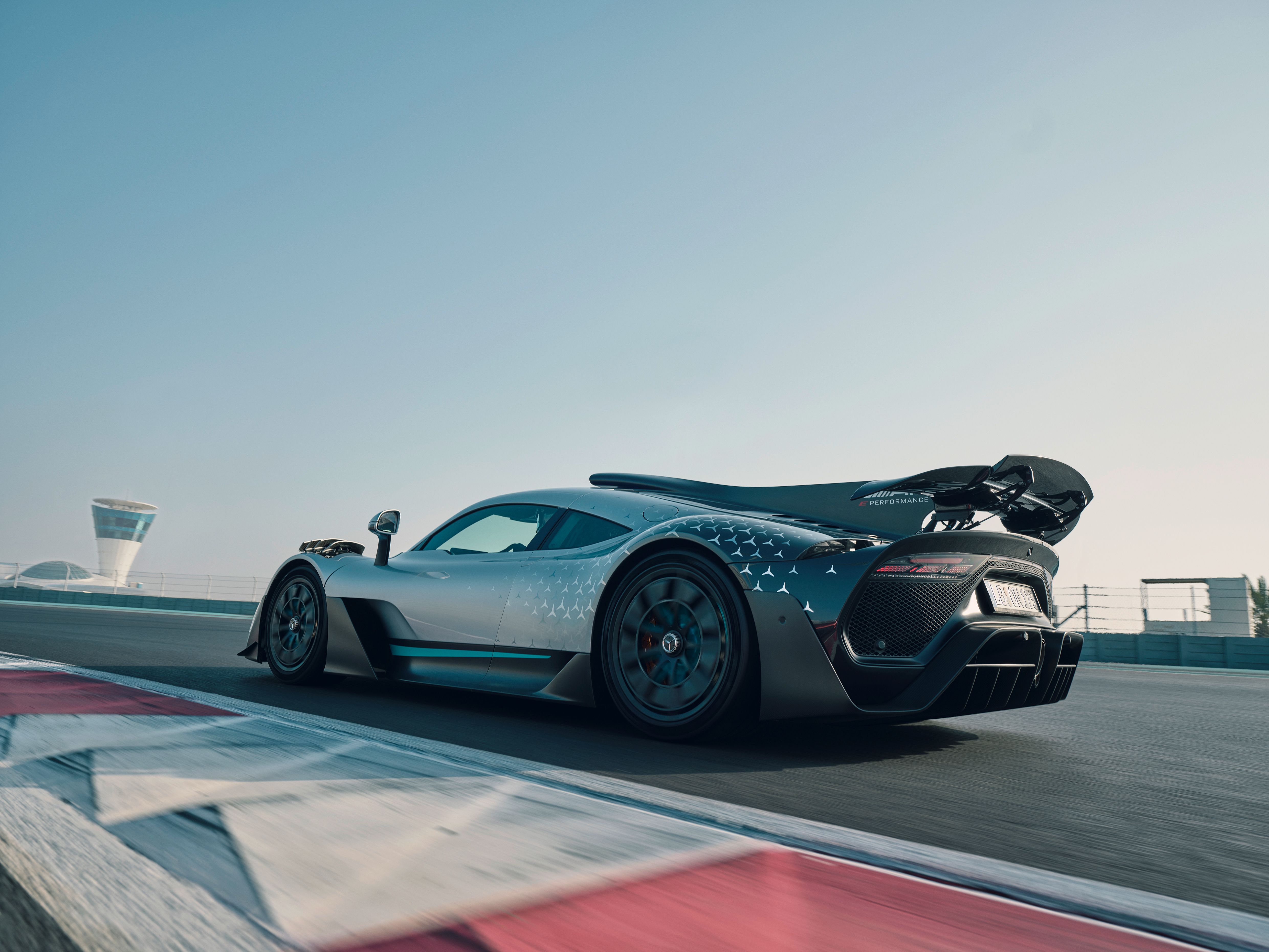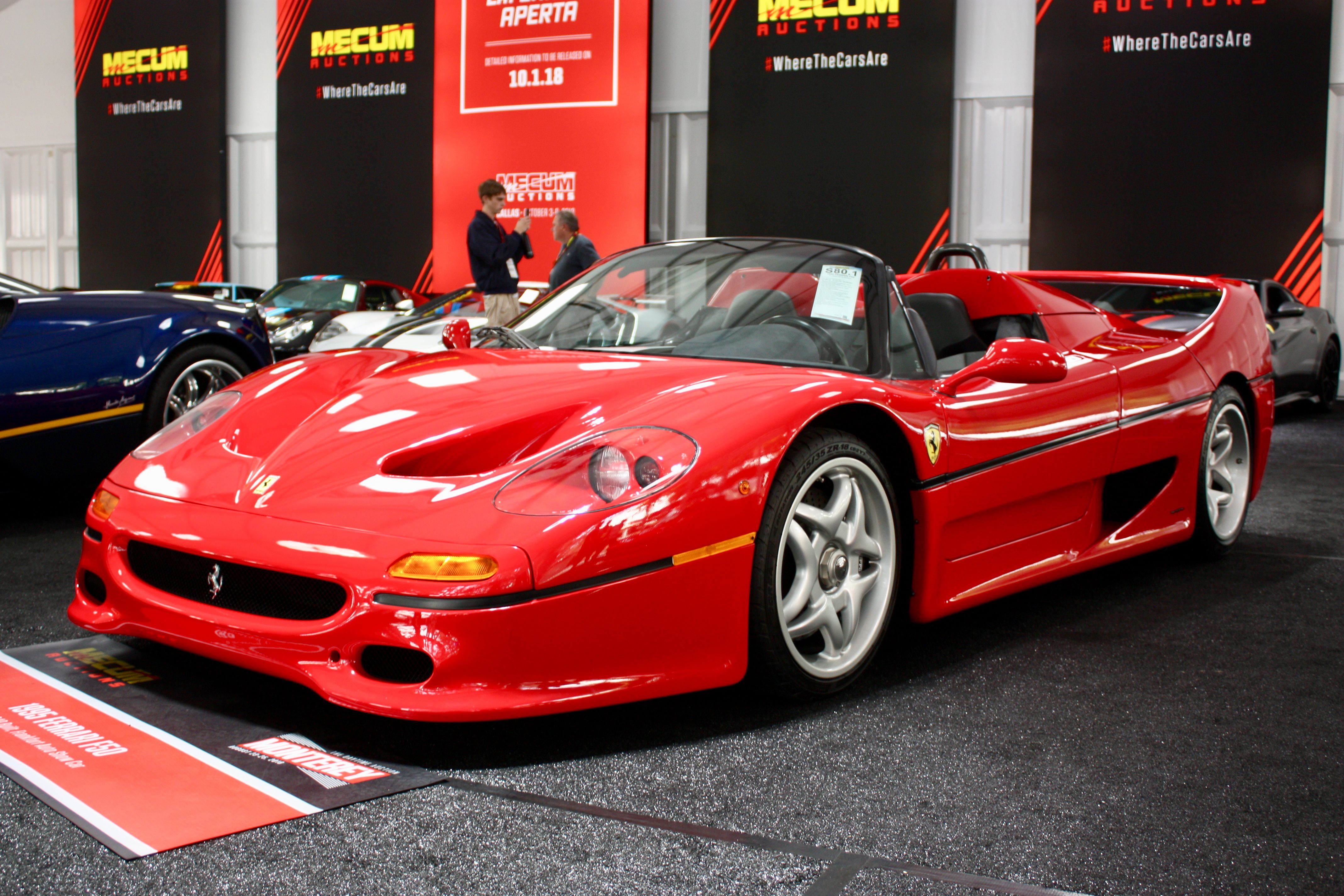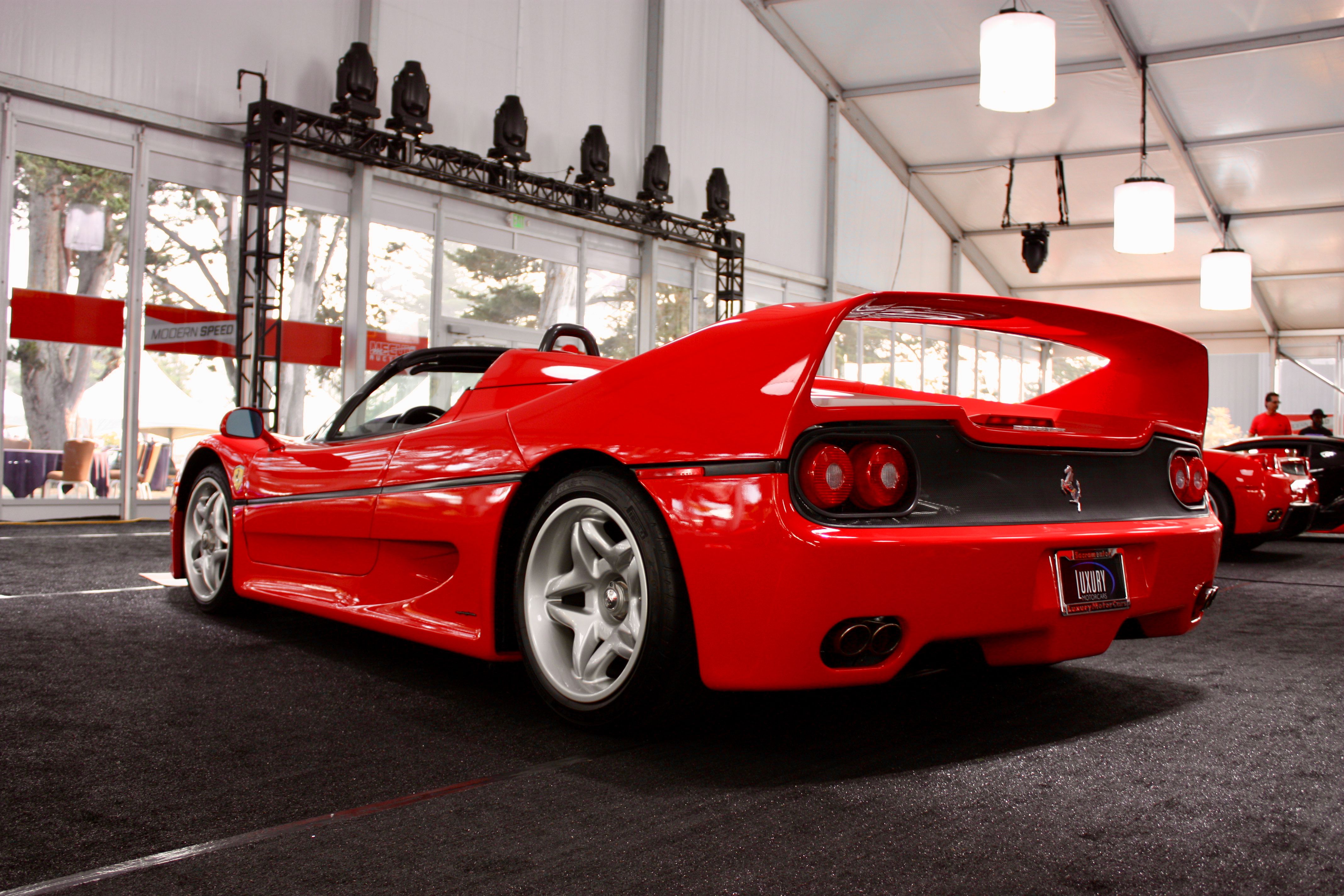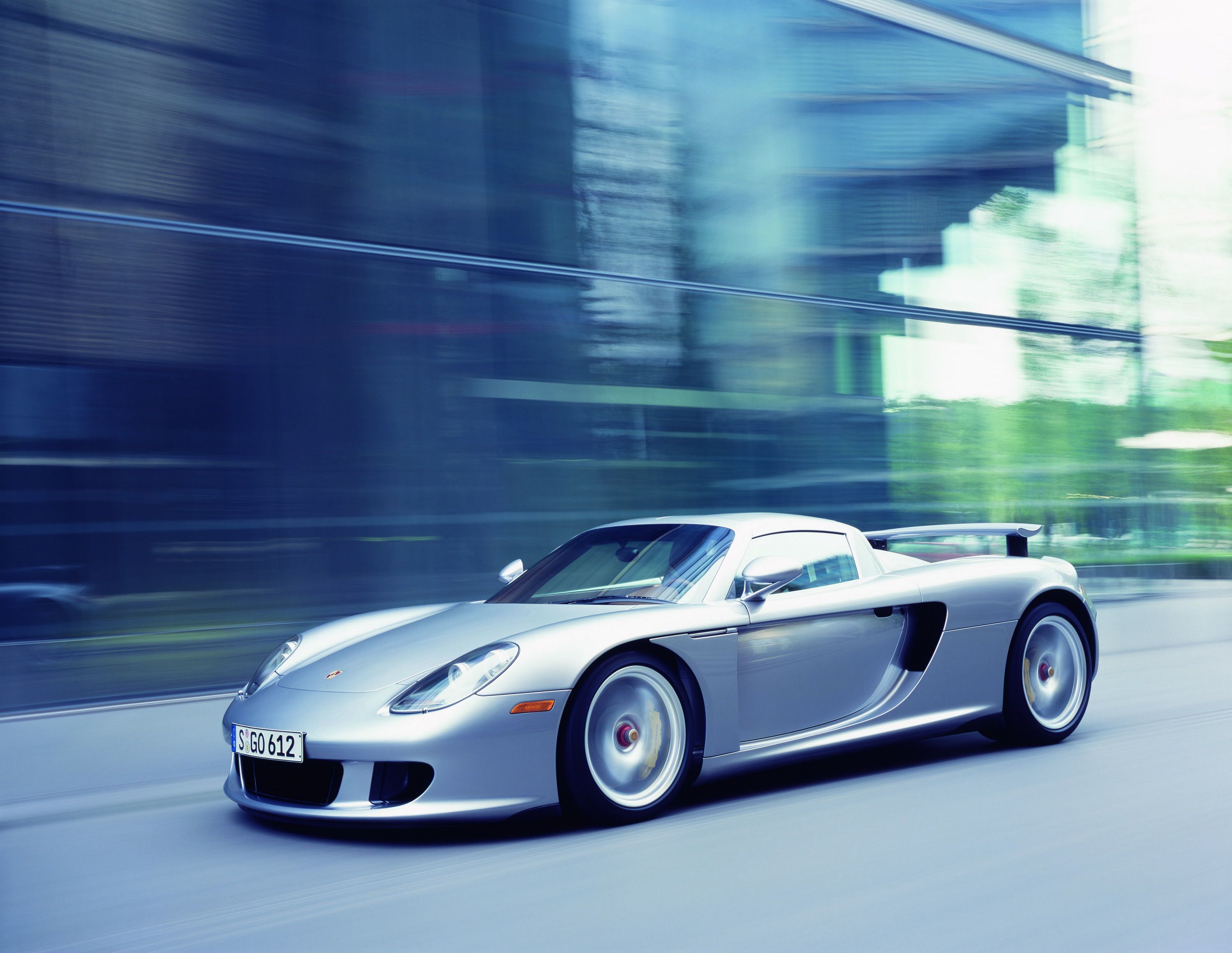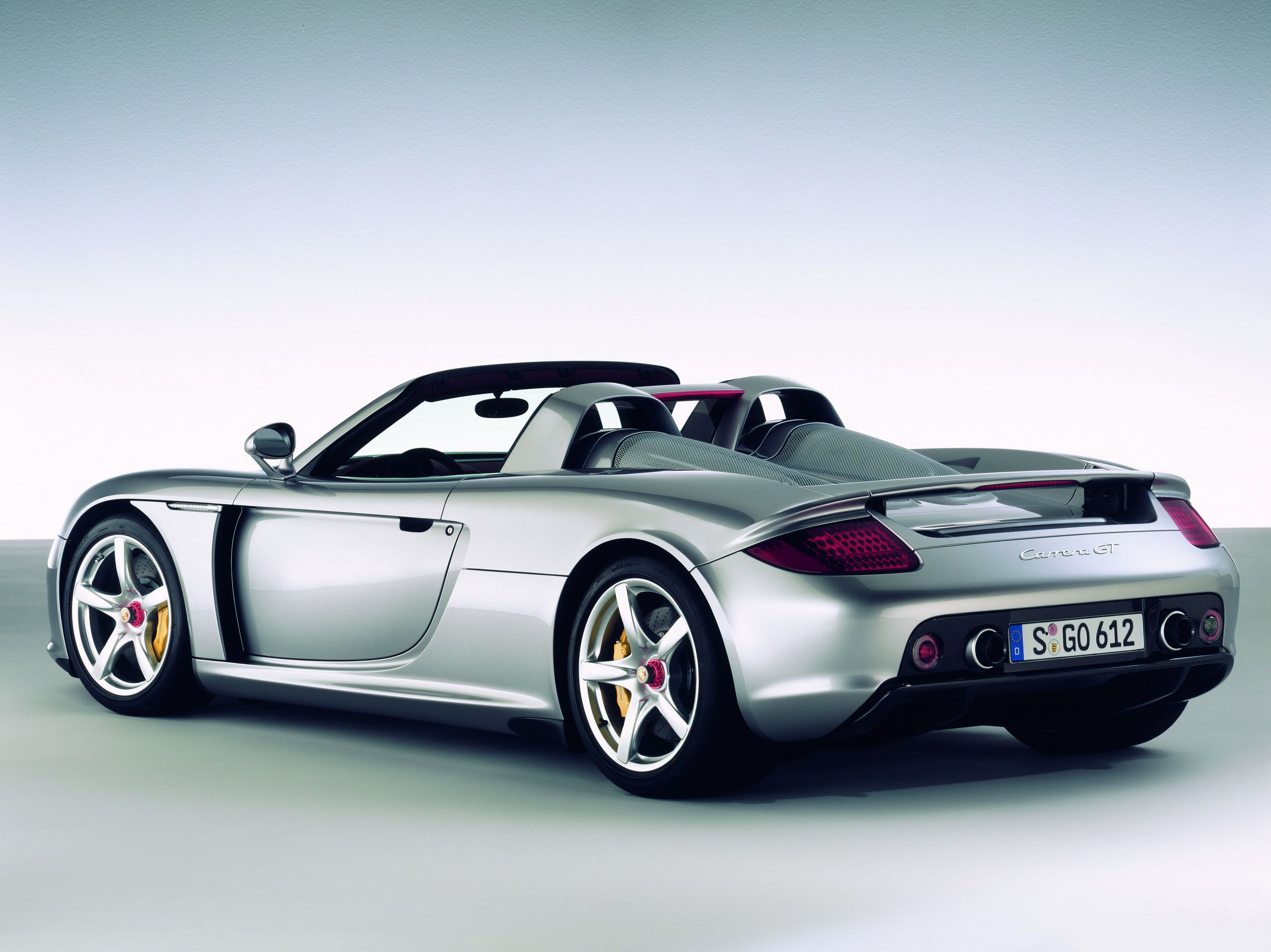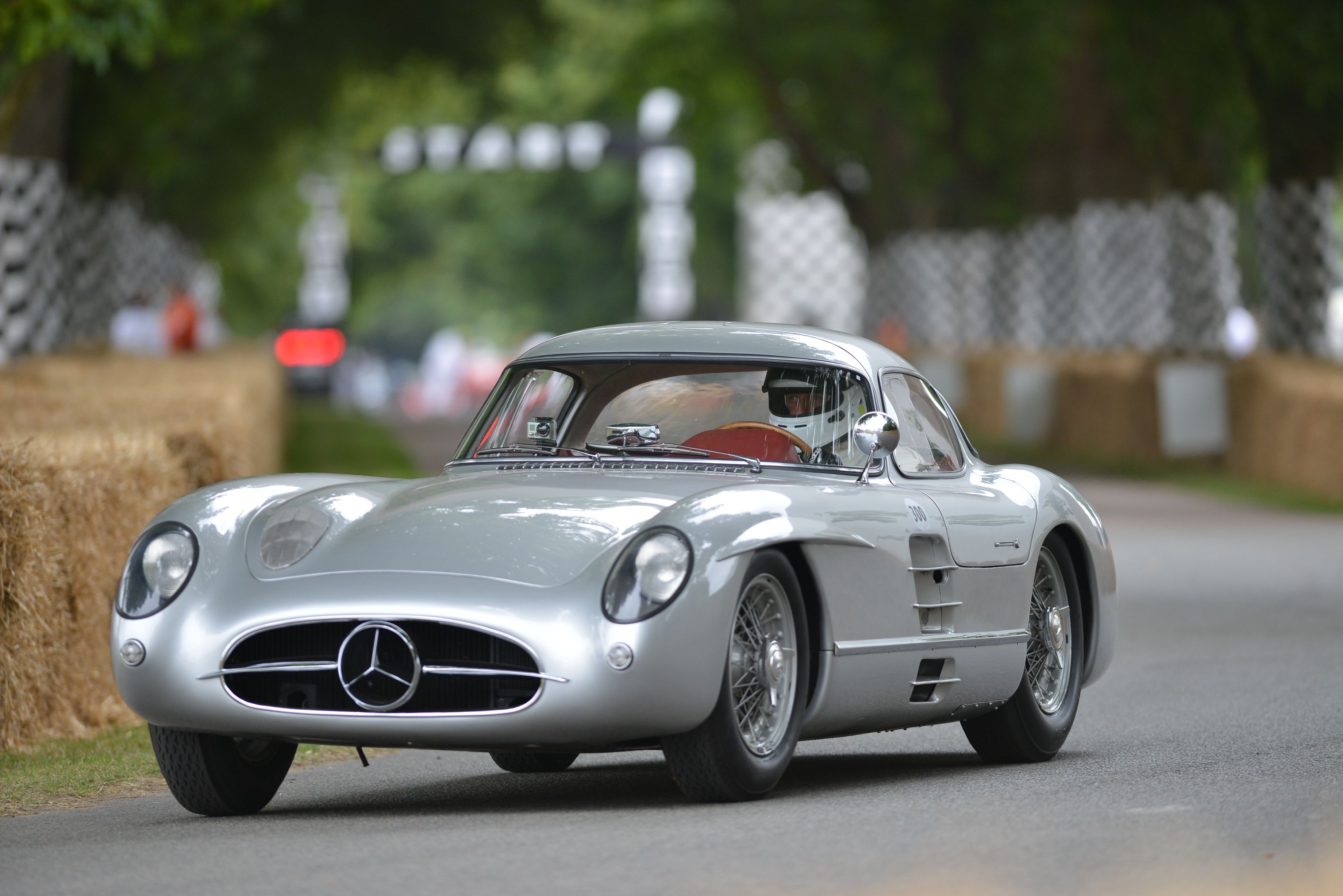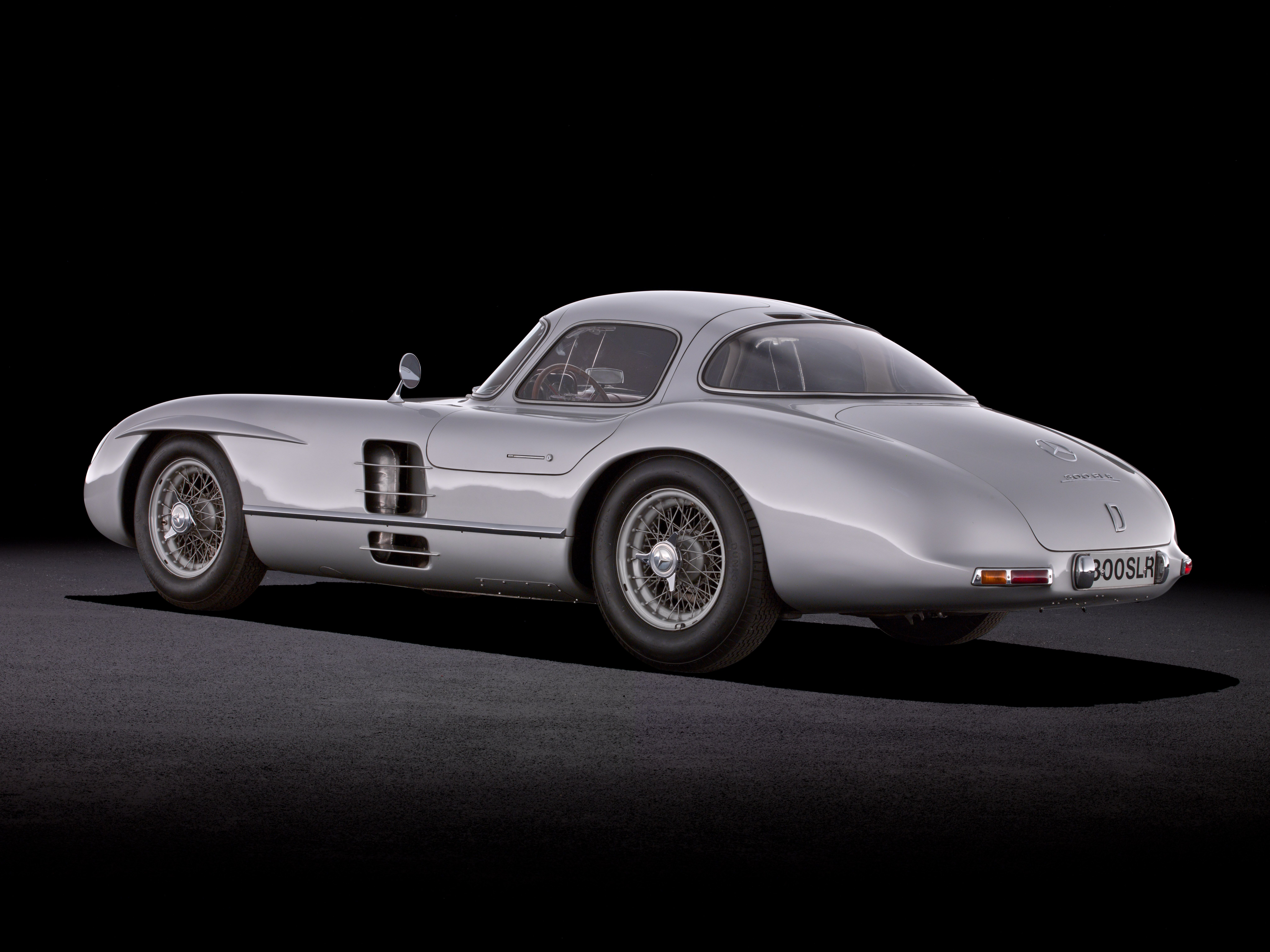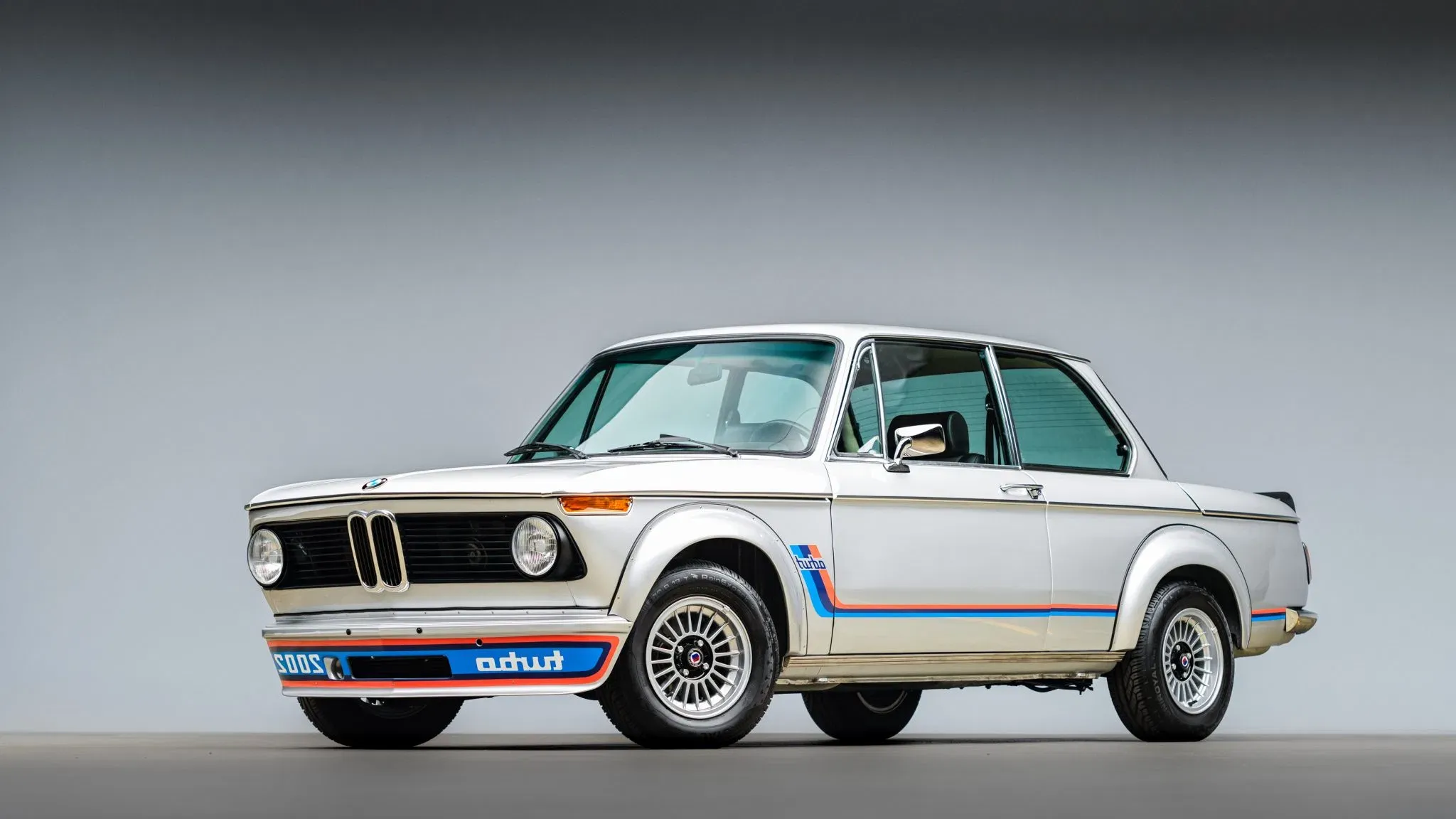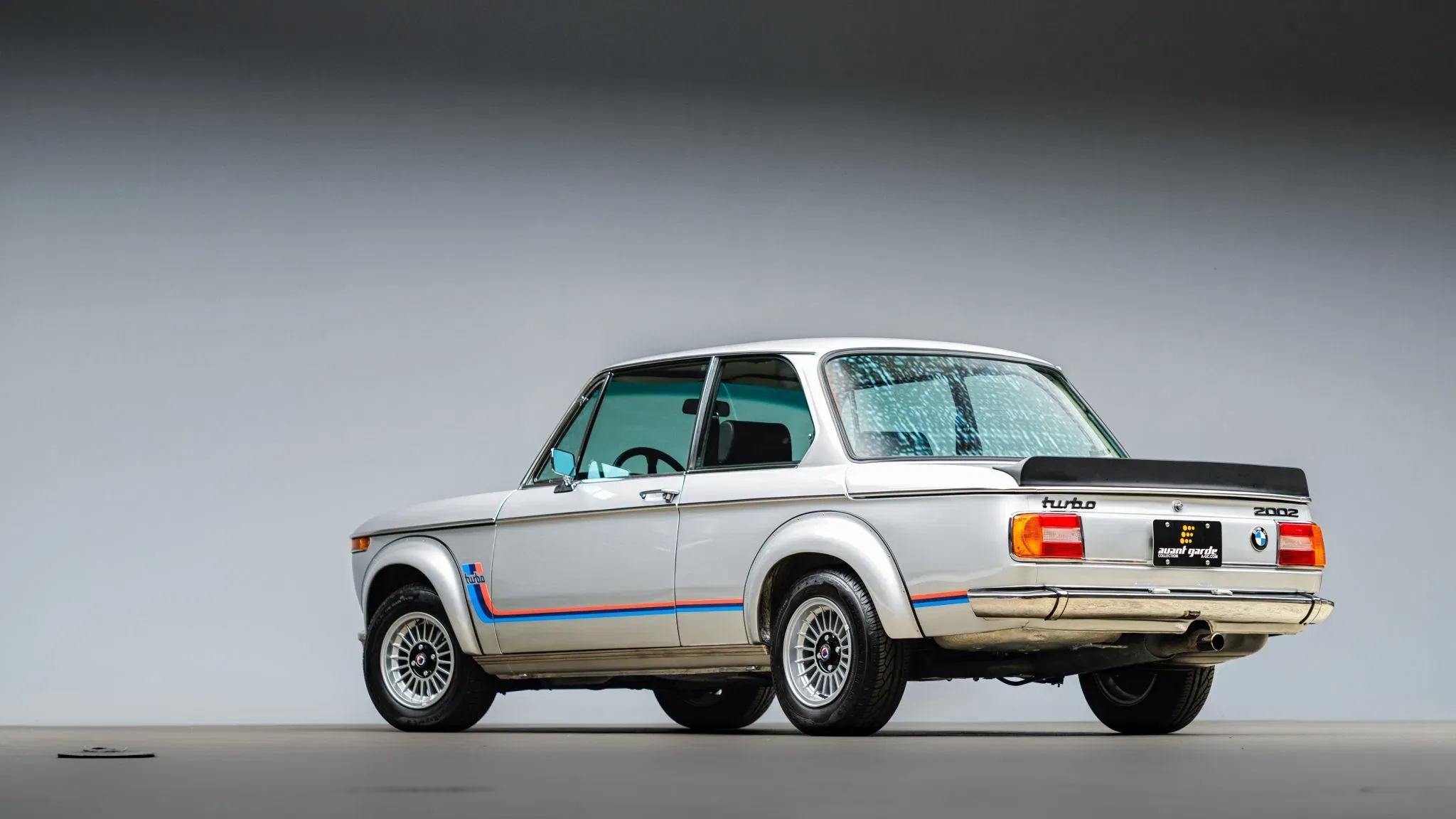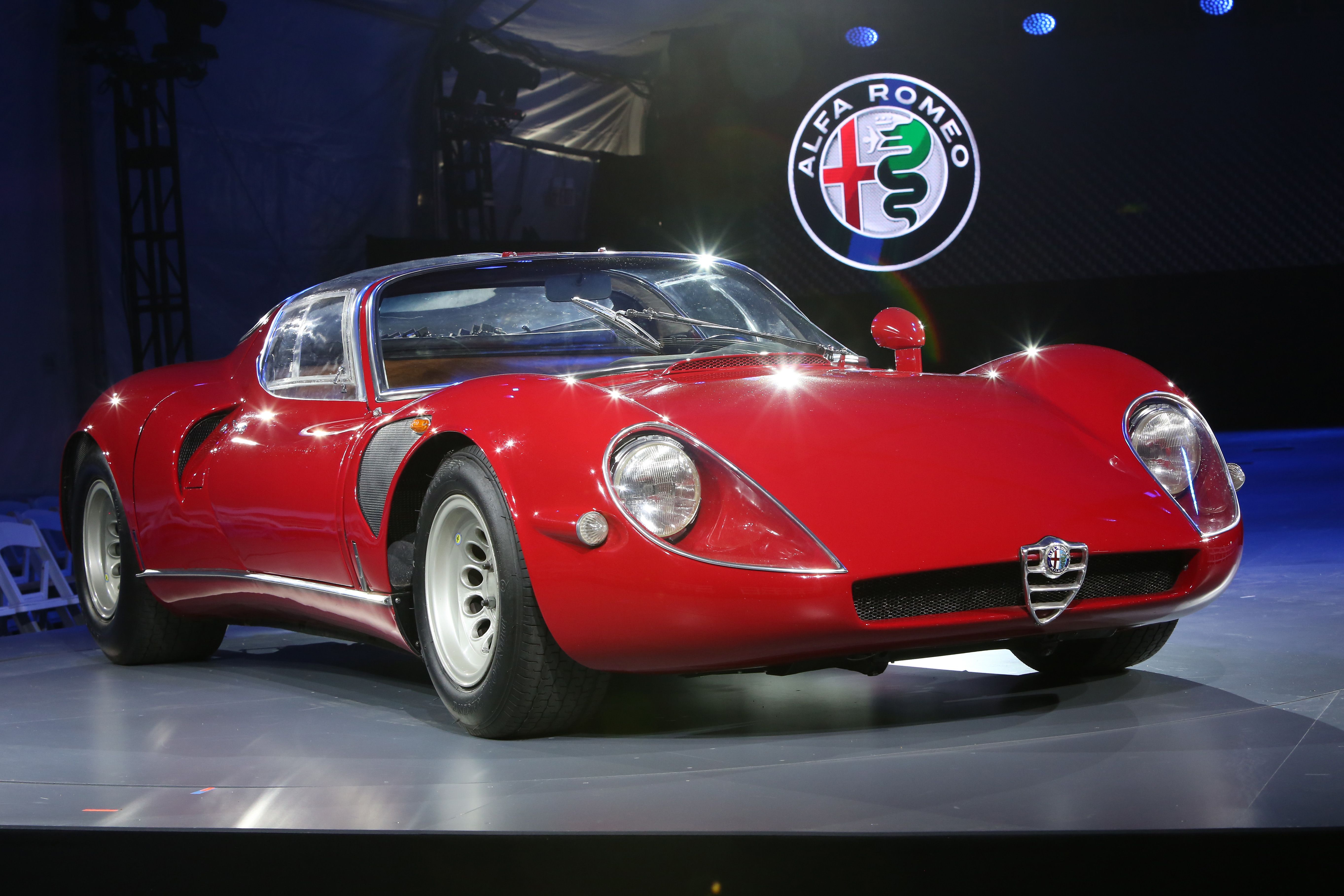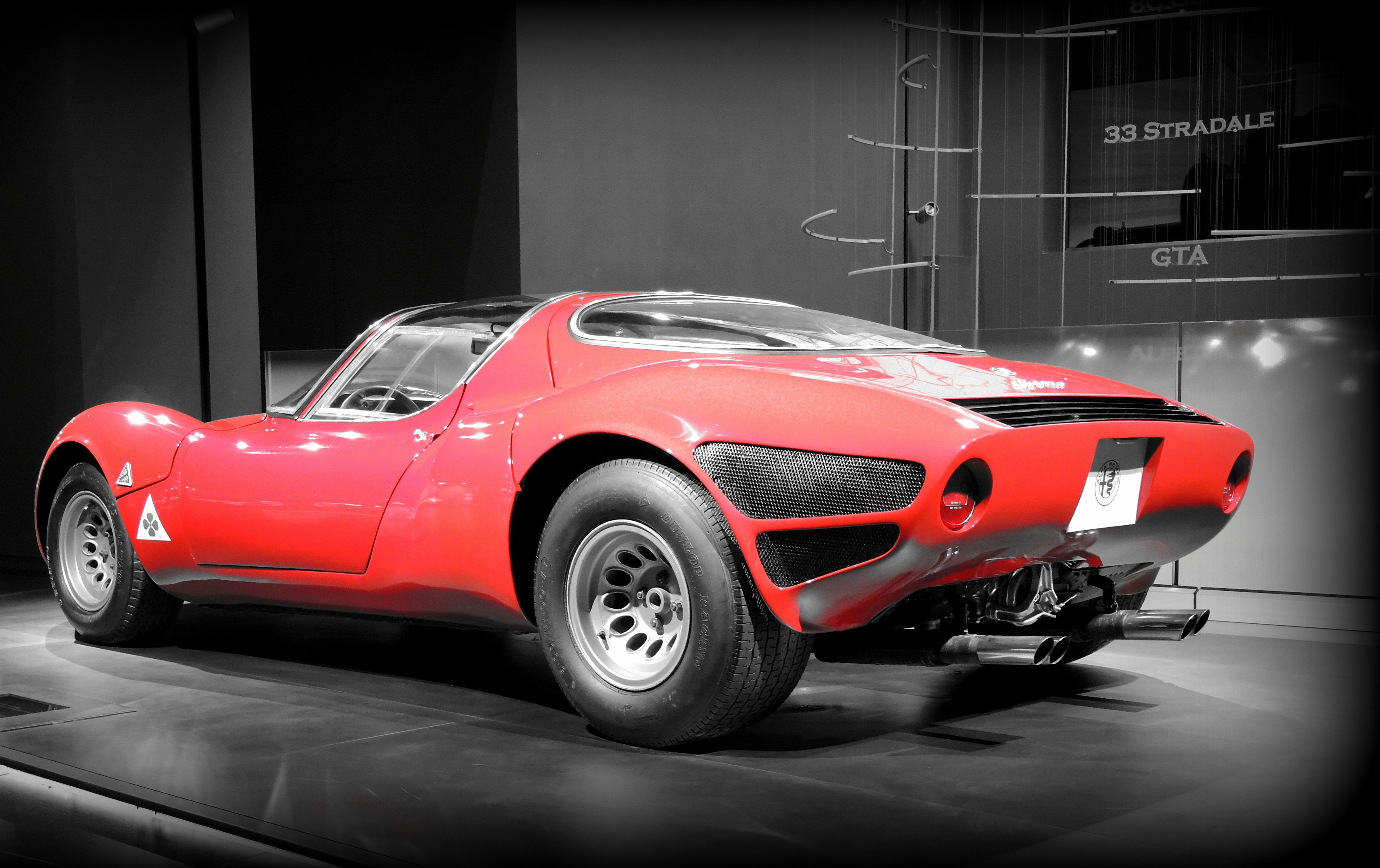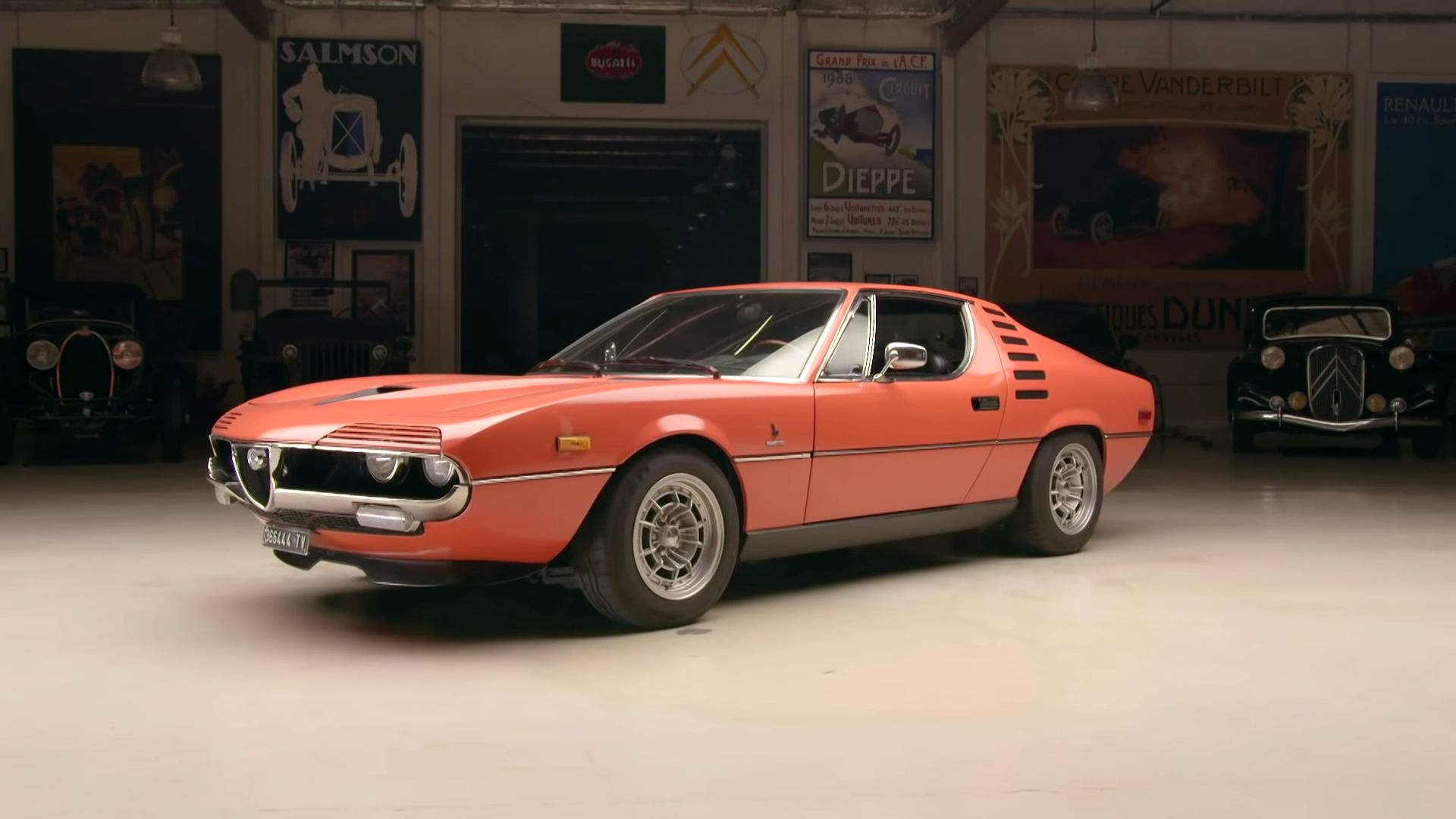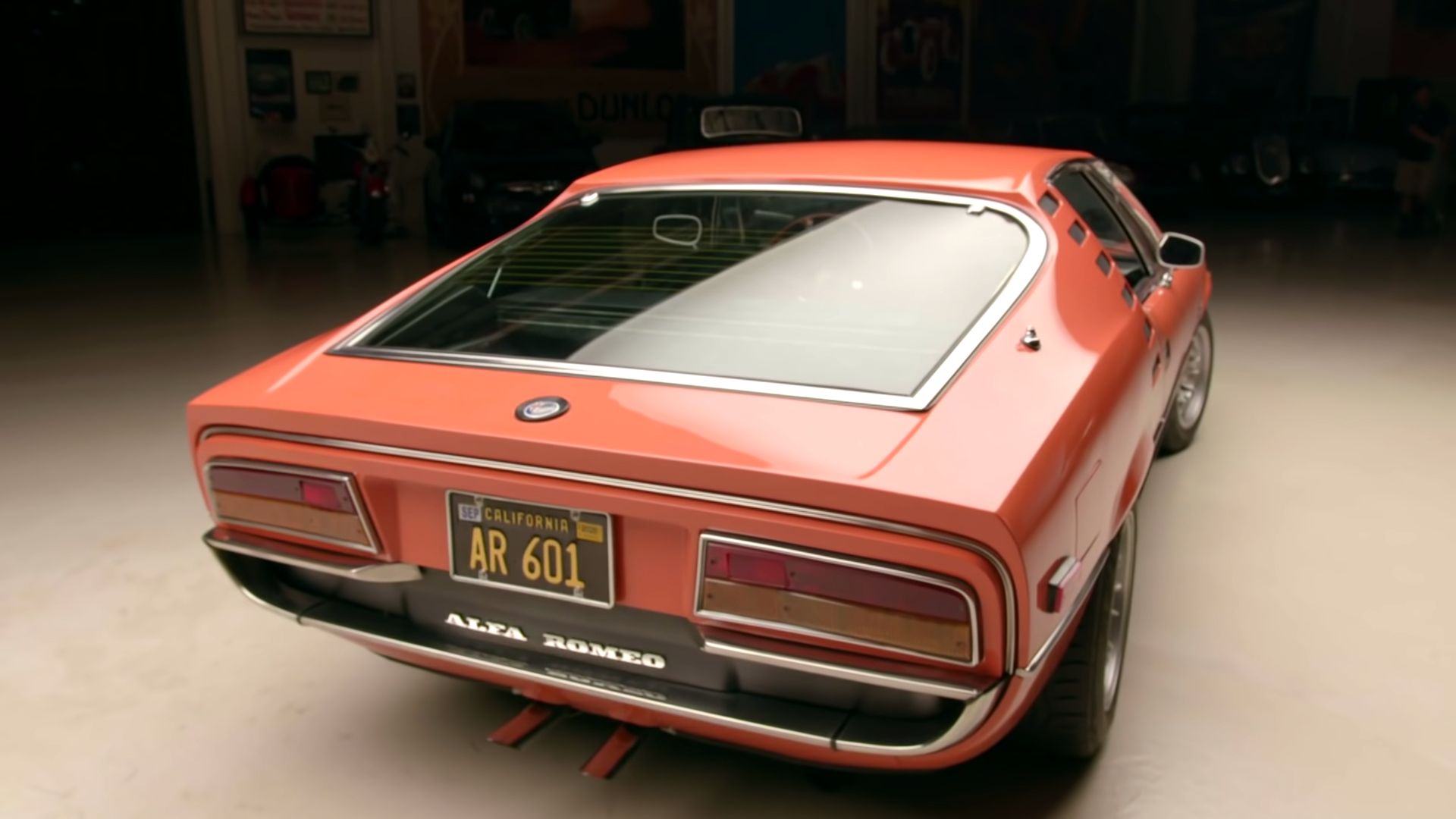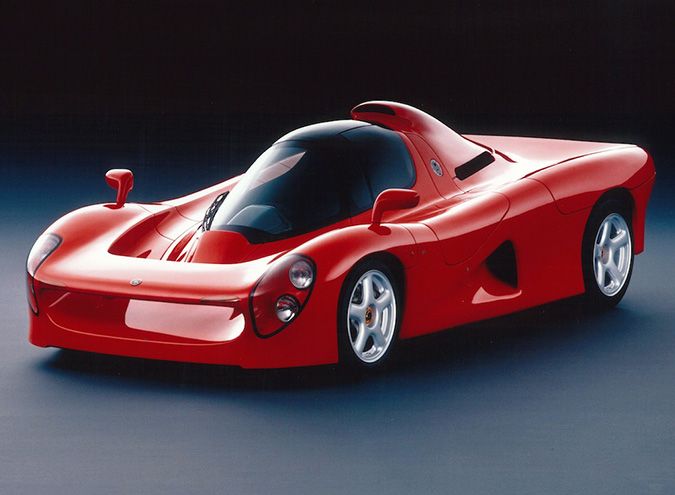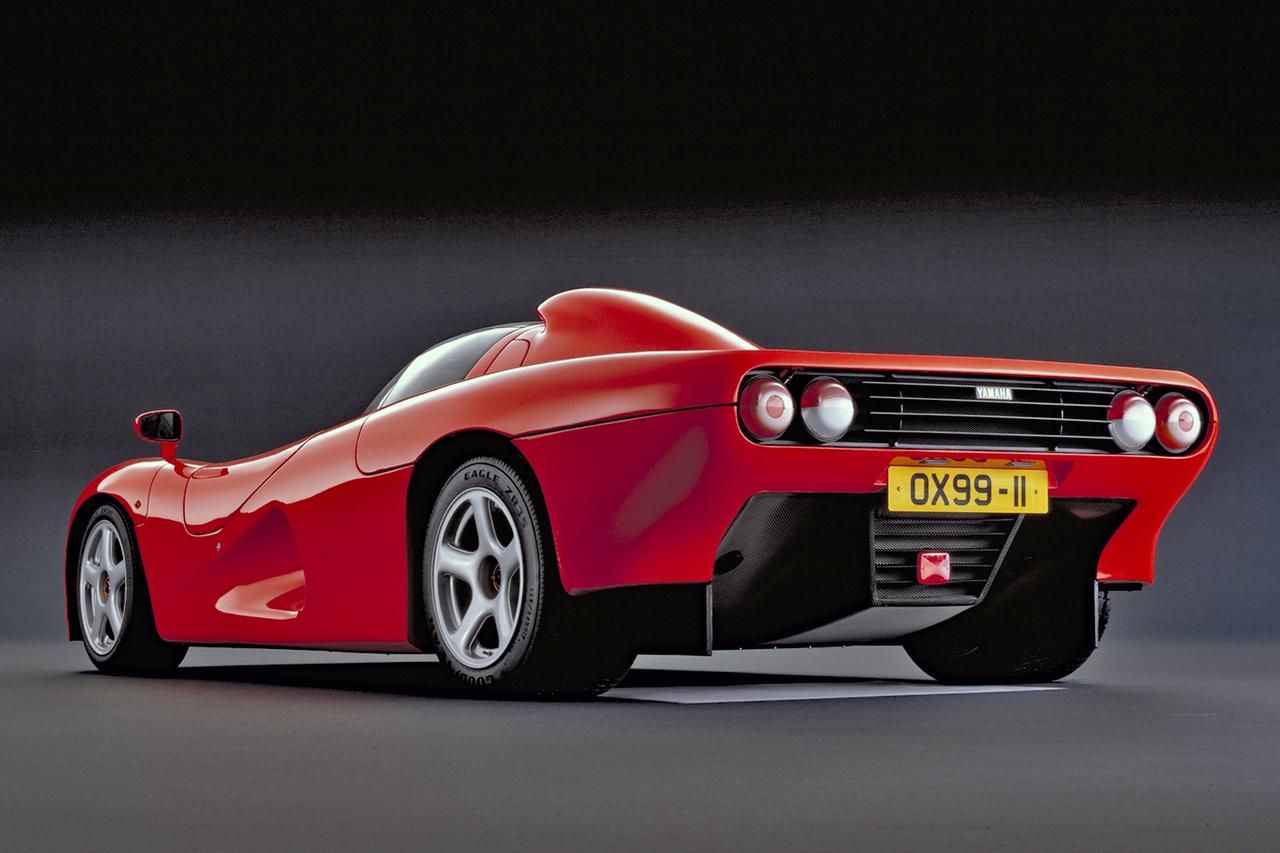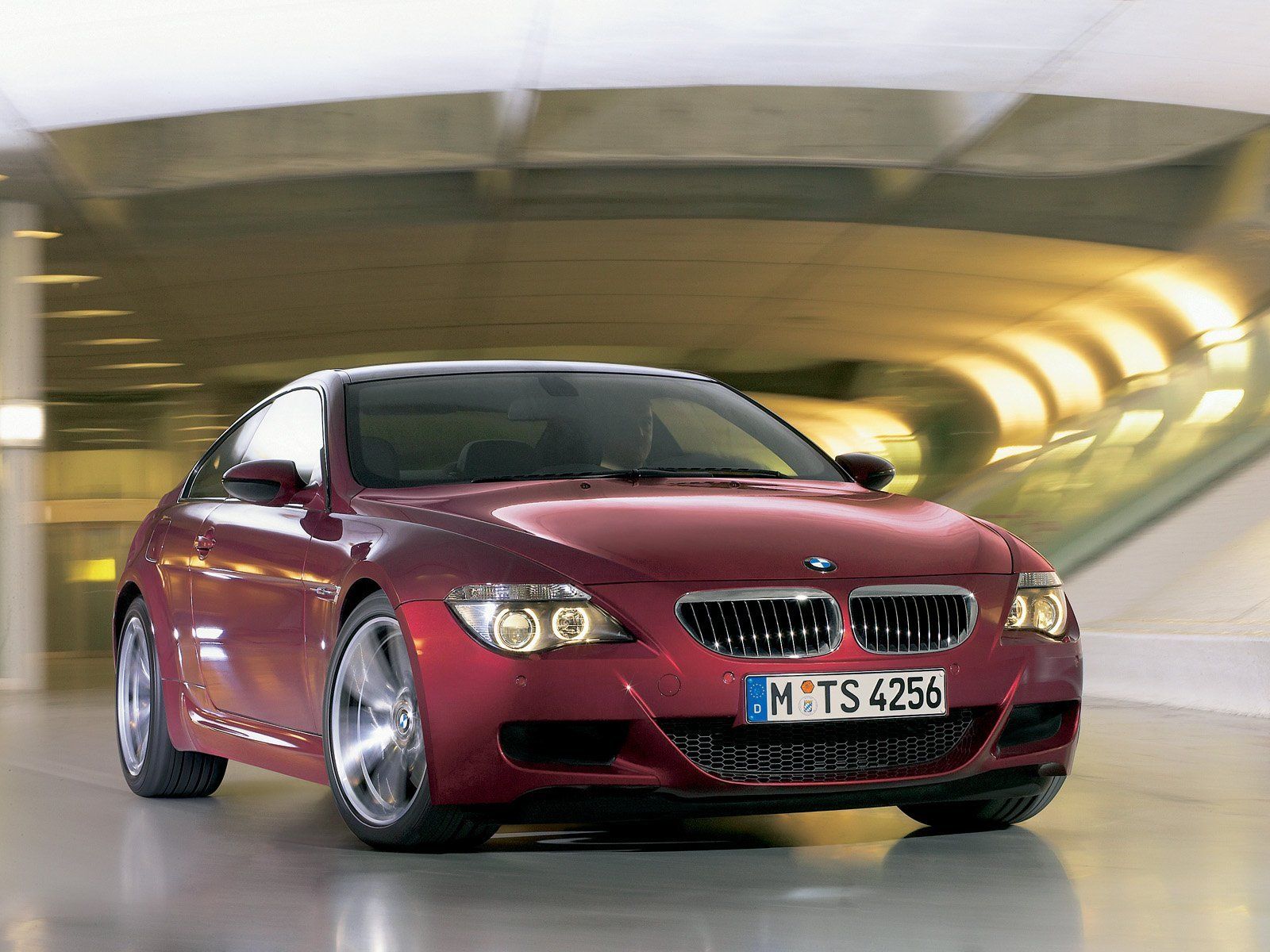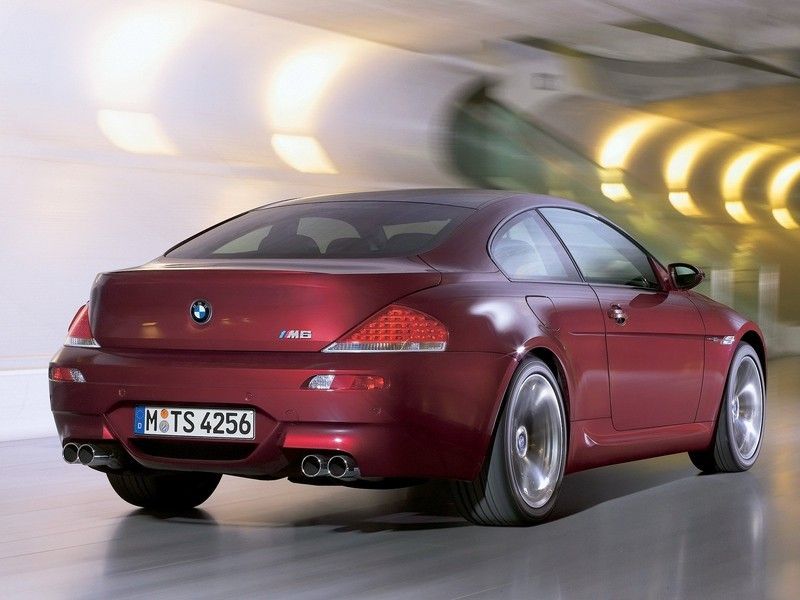The term “race car for the road” has been abused quite thoroughly by marketers wanting to make certain cars more appealing to car enthusiasts. With that said, few things scream “race car for the road” as loud as a Formula One engine, and these 10 cars are motivated by engines based on, or developed for Formula One racing.
Mercedes-AMG One
The Mercedes-AMG One is the latest example of a road-going vehicle powered by a Formula One engine. The hypercar has been in the pipeline for five years due to the challenges involved in making the F1 engine compliant with the latest emissions regulations. The 1.6-liter turbocharged V-6 has been substantially revised and features a lower redline of 11,000 RPM, compared to 15,000 RPM for the F1 application.
In the AMG One, the V-6 works with three electric motors for a total output of 1,012 horsepower, allowing for a top speed of 219 mph (351 km/h) and an impressive 0 to 124 mph (200 km/h) in 6.0 seconds. Only 275 examples are planned, all of which are sold, with each having a sticker price of $2.72 million. It's worth noting that a racing engine doesn't last anywhere near as long as a normal one. The 1.6-liter F1 unit requires a complete overhaul every 31,000 miles (50,000 km).
Ferrari F50
The Ferrari F50 is known for two things: being slower than its predecessor, the F40, and having a Formula One engine. It was the Tipo 641 unit that powered the F50, but it was heavily revised in order to improve its drivability. Displacement was increased from 3.5 liters in the racing version to 4.7-liters for the road-going Ferrari.
The engine produced 520 horsepower at 8,500 RPM and 347 pound-feet (471 Nm) at 6,500 RPM. With a six-speed manual sending power to the rear, the F50 was capable of 0 to 60 mph (97 km/h) in 3.7 seconds on its way to a top speed of 202 mph (325 km/h). The F50’s production run ended after 349 examples. There was also a track-only Ferrari F50 GT, of which only three were built, with a power output of 720 horsepower.
Porsche Carrera GT
Largely considered to be one of the last analog supercars, the Porsche Carrera GT was powered by a racing engine, which Porsche developed for a British F1 racing team, called Footwork, long before the car was conceived. The engine was never used for racing so the German carmaker decided to utilize it for road use. The Carrera GT Concept featured a 5.5-liter version of the V-10, which was later enlarged to 5.7 liters for the production version.
The naturally-aspirated V-10 featured a 68-degree V-angle and an over-square design. It produced 612 horsepower at 8,000 RPM and 435 pound-feet (590 Nm) at 5,750 RPM. The 0 to 60 mph (97 km/h) was possible in 3.7 seconds on to a top speed of 205 mph (330 km/h). Production of the Carrera GT ended after 1,270 examples.
Mercedes 300 SLR
One of the most iconic models of Mercedes-Benz shared its basic engine architecture with the Mercedes W196 Formula One car. The W196 debuted in 1954 with a 2.5-liter naturally-aspirated inline-eight engine and an output of 257 horsepower. A year later, in 1955, came the 300 SLR, with a 3.0-liter version of the same engine, producing 310 horsepower.
Rudolph Uhlenhaut was responsible for designing the 300 SLR and the two fixed-head examples were even named after him. Unfortunately, the 300 SLR is, often, remembered for the horrendous, 1955 Le Mans incident, in which 82 people lost their lives after a 300 SLR flew into the public after making contact with an Austin Healey, trying to avoid Mike Hawthorn’s Jaguar D-Type, coming out of the pitlane. Did we mention that a one-of-two 1955 300 SLR recently went under the hammer for €135 million and is now the most expensive car in the world?
BMW 02 Series
The 1966-1975 BMW 02 is one of the more unlikely entries on the list. The 02 Series was powered by a variety of inline-four engines, from 1.6 to 2.0 liters. All of these engines were from the M10 series, which was also the basis for the 1.5-liter M12/M13 Turbo inline-four, Formula One engine that developed up to1,500 horsepower.
In the BMW 02, the engine had much more humble specs, having an output of 74 horsepower in the 1502 to 168 horsepower in the 2002 Tii, and 87 pound-feet (118 Nm) to 177 pound-feet (240 Nm). Unlike most other cars on the list, the BMW 02 series was a mass-produced car, with over 837,000 units made in all versions. The transmission was either a four-speed or an optional five-speed manual, both sourced from ZF.
Alfa Romeo 33 Stradale
The Alfa Romeo 33 Stradale is a road-going version of the Tipo 33 racing prototype. Between 1950 and 1988, Alfa Romeo developed three different V-8 engines for various racing series, including Formula One. It was the F1 variant that was the basis for the 33 Stradale’s 2.0-liter V-8. The 90-degree unit featured a flat-plane crankshaft and, in road-going trim, developed 227 horsepower (169 kilowatts) at 8,800 RPM and 152 pound-feet (206 Nm) at 7,000 RPM. However, factory spec sheets claim that the 33 Stradale’s engine actually makes 254 horsepower (189 kilowatts) with a less restrictive exhaust.
Power from the mid-mounted V-8 went to the rear wheels through a six-speed manual transaxle. The 33 Stradale weighed just 1,543 pounds (700 kg), which translated into a 0 to 60 mph (97 km/h) time of 5.5 seconds on to a top speed of 162 mph (260 km/h). The Alfa Romeo 33 Stradale is considered one of the most beautiful cars ever made thanks to a body designed by Franco Scaglione, which was built by Carrozzeria Marazzi. Only 18 cars exist.
Alfa Romeo Montreal
If the Alfa Romeo 33 Stradale is a lightweight sports car, the Bertone-designed Montreal is more of a sporty gran tourer. Introduced in 1970, the Montreal featured a bigger version of the 33 Stradale engine, which had Formula 1 roots. However, it dropped the flat-plane crankshaft in favor of a less aggressive, cross-plane one and got an increased displacement of 2.6 liters.
While the engine was rated at 197 horsepower (147 kilowatts) at 6,500 RPM, it had 230 horsepower according to the SAE rating. Torque was rated at 173 pound-feet (235 Nm) at 4,750 RPM. Power from the 90-degree, DOHC V-8 was sent to the rear through a five-speed ZF. The 0 to 60 mph (97 km/h) took 5.9 seconds and the top speed was 139 mph (224 km/h).
Yamaha OX99-11
Yamaha is mostly known for making various types of motorcycles, but in 1991, the company also decided to make a car of its own. It was the Yamaha OX99-11 and it was named after its engine, the OX99. It was an engine Yamaha had developed for Formula One, which in race trim, was capable of over 560 horsepower at well over 10,000 RPM.
For road applications, the 3.5-liter V-12 was detuned to 400 horsepower (298 kilowatts) at 10,000 RPM and 210 pound-feet (285 Nm). As the Yamaha OX99-11 weighed just 2,535 pounds (1,150 kg), it could sprint to 60 mph (97 km/h) in 3.2 seconds on to a top speed of 217 mph (350 km/h). The OX99-11 looked like no other supercar and had two tandem seats, and a canopy. Only three examples were ever made.
BMW E60/E61 M5 & E63/E64 M6
In 2005, BMW introduced the BMW E60 and E63. Their respective performance versions in the form of the M5 and M6 came with one of the most controversial engines ever put into an M car – the S85b50. The 5.0-liter V-10 remains, to this day, the only road-going BMW V-10 engine. The high-revving unit was based on the 3.0-liter P84/5 Formula One engine that powered the BMW Williams FW27 racecar, during the 2005 F1 season. In the BMW M5 and M6, the engine produced 507 horsepower (378 kilowatts) at 7,750 RPM and 383 pound-feet (520 Nm) at 6,100 RPM.
Power went, exclusively to the rear, via a six-speed manual or the dreaded, seven-speed SMG transmission. The 0 to 60 mph (97 km/h) took 4.5 seconds and, delimited, the M5 could do 203 mph (326 km/h). The S85 V-10 was also the basis for the S65 V-8 that powered the BMW M3 E92. For all its F1 tech and great driving characteristics, the S85 requires a lot of maintenance, including the rod bearings, which need to be replaced every 60,000- to 80,000 miles.

